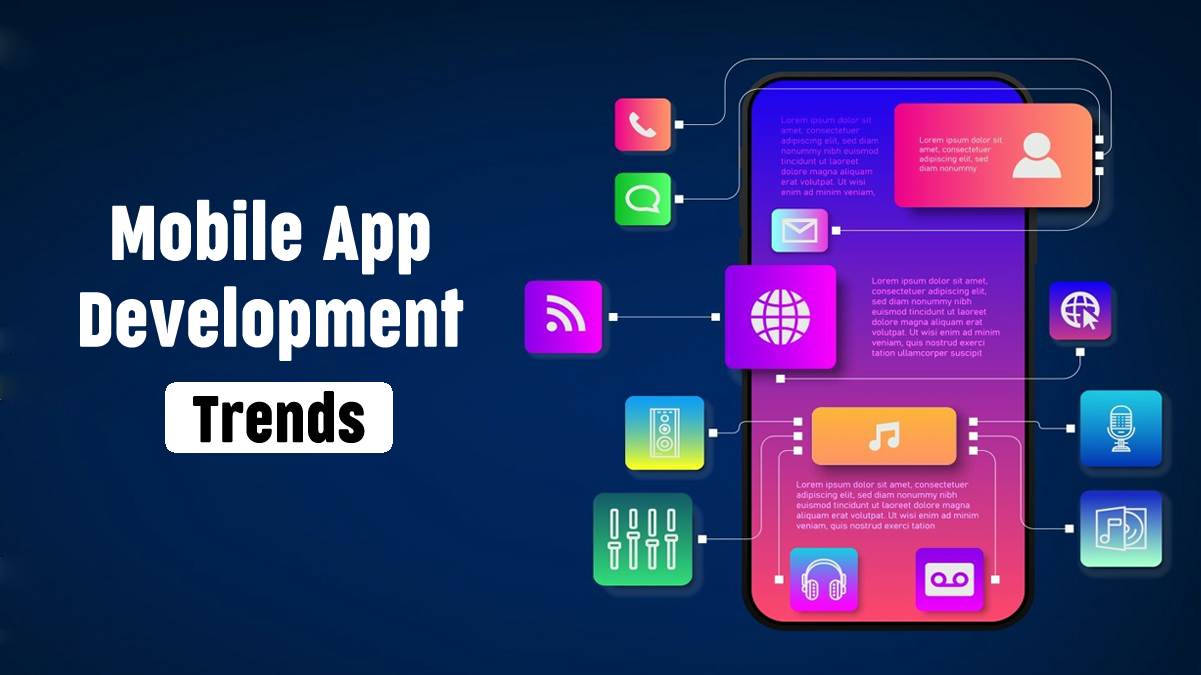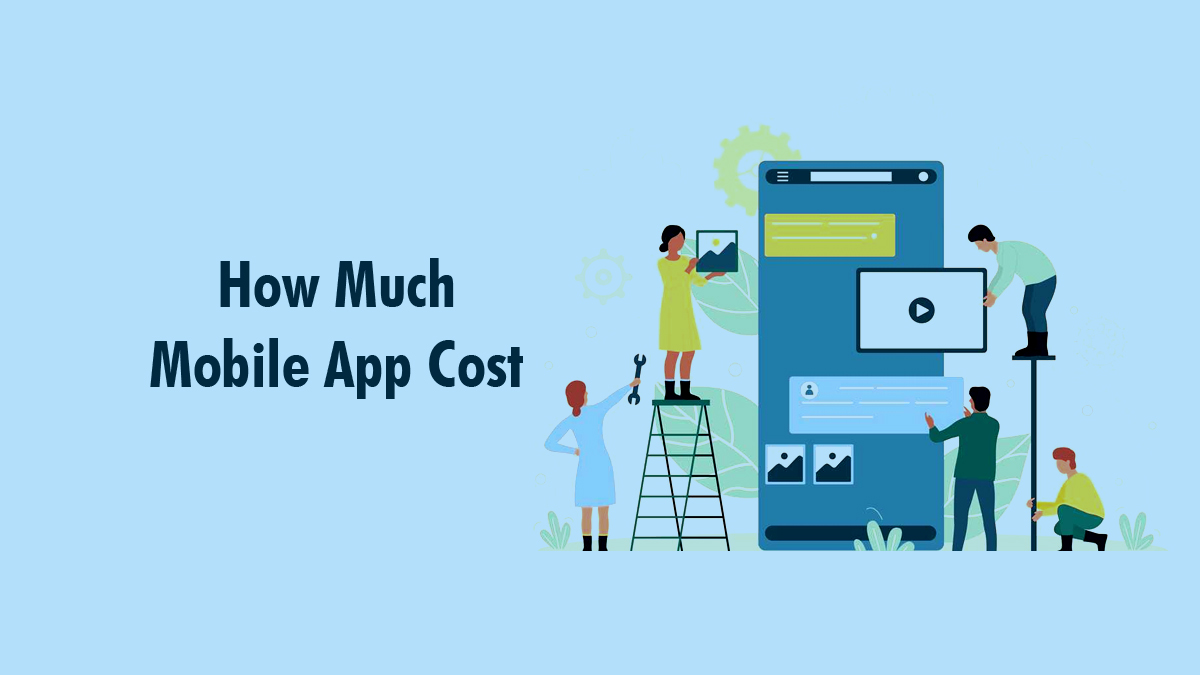Welcome to the realm of digital progress, where mobile app development takes the lead in shaping our modern world. The technological landscape has undergone a dramatic transformation as mobile phones evolved beyond their basic role as mere communication devices, becoming integral components of our daily lives.
This shift has not only influenced consumer behavior but has also underscored the importance of developers keeping pace with the latest trends and advancements in this constantly evolving field. The surging popularity of mobile applications necessitates continual adaptation and innovation on the part of developers. Those engaged in mobile app development must stay attuned to shifting technology, consumer preferences, and industry trends.
In this post, we will delve into the key mobile app development trends shaping the industry. These insights are indispensable for developers as they navigate this ever-changing terrain. Grasping these trends, which encompass enhancements in user experience and technological breakthroughs, is essential for creating successful and competitive mobile applications in today’s fast-paced digital market.
Top Mobile App Development Trends
Mobile app development trends encompass the methods, technologies, and approaches commonly used to create mobile applications. These trends provide insight into the direction the market is taking and can significantly impact the success of your mobile app.
It is crucial for mobile app developers and businesses to stay current with these changes. This enables them to incorporate the latest innovations while ensuring that the app meets consumer expectations in terms of features, functionality, and the overall user experience.
Now, let’s explore the key trends in mobile app development.
Artificial Intelligence (AI) And Machine Learning (ML)

Incorporating Artificial Intelligence (AI) and Machine Learning (ML) into mobile app development plays an essential role in influencing the functionality and capabilities of these applications. Machine Learning is a critical component that enables firms to delve into and understand their customers’ complex demands and preferences. This understanding paves the way for the development of novel mobile app ideas and strategies aimed at enhancing the overall user experience.
Meanwhile, Artificial Intelligence has become an integral part of our daily lives, exemplified by the convenience of virtual assistants like Siri. Its practical benefits are evident in various areas, such as quickly finding contacts or retrieving information, even when precise details, such as phone numbers, elude our memory.
As developers manage the integration of these modern technologies, their focus is firmly on creating a smooth, dependable, and secure process, thus addressing any potential concerns regarding data misuse and privacy breaches.
This convergence of AI and ML technologies has fundamentally transformed the mobile app landscape. These apps can now provide customized recommendations based on individual user activity patterns by harnessing AI’s cognitive capabilities. This collaboration not only enhances user experiences by making them more engaging and efficient but also empowers businesses to gain deep insights into their customer base.
This synergy allows for a more profound understanding of user habits and preferences, enabling businesses to create specialized and targeted products that directly meet their customers’ needs.
Looking ahead, these advancements will continue to reshape the app development industry. This progress promises to create more intelligent, efficient, and user-centric apps that adapt directly to the evolving and dynamic requirements of both users and enterprises.
As Artificial intelligence and Machine learning become more deeply integrated into mobile app development, the possibilities for innovation and refinement appear boundless, ushering in a future of even more sophisticated and personalized digital experiences.
Internet Of Things (IoT) App Integration
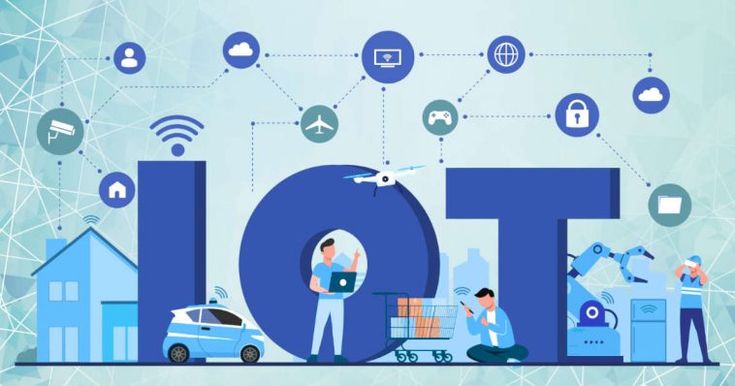
The Internet of Things, sometimes known as IoT, is not a recent development. It ultimately involves providing everyday devices with internet access and enhancing their intelligence. Nowadays, it’s practically a necessity because we rely on so many gadgets that require an internet connection.
Moreover, developers of mobile apps are capitalizing on this trend by integrating IoT features into their applications. This means you can use a single app on your smartphone to monitor and control all your IoT devices.
According to Statista’s projections, the Internet of Things technology market is expected to exceed $1.6 trillion by 2025, highlighting the tremendous promise in this field. Mobile apps are anticipated to contribute around $226 billion to the projected $318 billion global IoT industry in 2024, marking an impressive 58% increase from 2020 to 2024.
People have become accustomed to technology that simplifies their lives. The Internet of Things encompasses these internet-connected devices that provide convenience and automated control. Consider smart home technology and how smartphone applications enable it.
These applications allow you to adjust your home’s thermostat while you’re away, lock or unlock your front door, and even connect household appliances like refrigerators to your phone.
Looking ahead to 2024, we anticipate a significant increase in mobile apps designed for IoT, especially in the domains of domestic appliances, automobiles, display devices, innovative technology, and healthcare. Exciting developments are on the horizon in these industries.
Also Read: What is a Framework in Programming: The Key to Efficient Coding
Chatbots

Since the days of AOL Instant Messenger, chatbots have come a long way. They are now prominently featured in customer service on websites.
Although chatbots are currently used in only a limited number of apps in the Apple App Store and Google Play Store, this is expected to change in 2024. Chatbot-driven interactions are gaining popularity, and AI advancements are making their responses increasingly realistic and human-like.
The Global Chatbot Market is on a significant growth trajectory, with a projected Compound Annual Growth Rate (CAGR) of 23.3% from 2024 to 2030. Integrating chatbots more comprehensively into mobile app development is crucial for reaching a broader audience.
As AI continues to advance, chatbots are expected to become more prevalent in various applications, especially mobile apps. This transformation will enhance customer experiences and make support services more efficient.
Augmented Reality (AR) And Virtual Reality (VR)
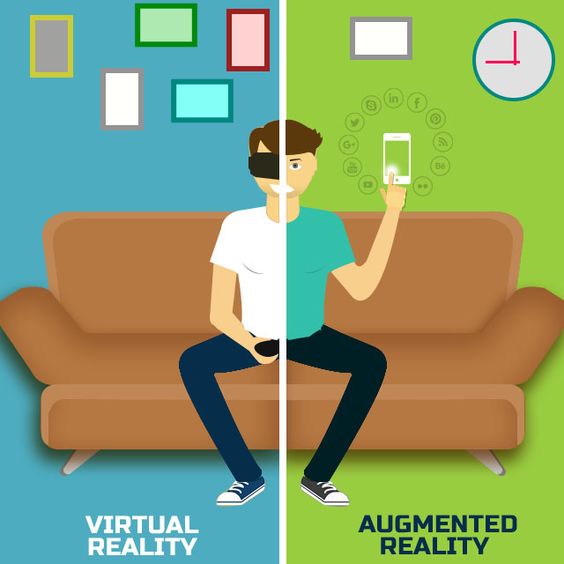
Augmented Reality (AR) and Virtual Reality (VR) are catalyzing a significant transformation in the mobile app development industry. AR technology enables the superimposition of virtual objects onto the real world, enriching user experiences and facilitating applications such as interactive gaming and virtual try-ons for shopping. On the other hand, VR immerses users in virtual realms, offering opportunities for immersive entertainment, virtual tours, and instructional experiences.
Today, numerous businesses harness AR and VR to enhance user interactions. For instance, IKEA leverages augmented reality, enabling customers to visualize furniture within their homes before making a purchase. Meanwhile, Lenskart offers a virtual try-on feature for eyeglasses.
Tech industry titans like Apple, Google, and Meta are also at the forefront of AR and VR innovation. Google Maps’ “Live View” function provides real-time directions overlaid on the real world through the camera. Moreover, Apple’s LiDAR technology, known as “AR at the speed of light,” has been incorporated into devices like the iPad Pro and iPhone 12 series, enabling high-quality photo capture even in low-light conditions.
Looking ahead, AR and VR will reshape the landscape of mobile app development in unforeseen ways. These technologies will become deeply integrated into mobile app development trends, offering developers and consumers an array of thrilling possibilities.
Wearables

Wearable technology is currently sweeping the globe, with smartwatches, trackers, and fitness bands gaining remarkable popularity. According to Statista, the number of connected wearable devices worldwide has surged from 929 million to an astonishing 1.1 billion.
In 2019, Apple made a significant impact with a noteworthy announcement regarding wearables and app integration during WWDC. The launch of watchOS 6 brought the Apple App Store directly to the Apple Watch, opening the door for the creation of independent applications specifically tailored for these devices. Simultaneously, Google joined forces with Samsung’s Tizen software platform to develop unified wearable platforms aimed at reducing app startup times.
These developments underscore the increasing significance of wearable technology, solidifying its status as a prominent mobile app development trend for 2024. Essentially, software developers and companies need to be prepared to craft exceptional digital experiences for smartwatch and wearable device users. This proactive approach could give them a competitive edge over those who overlook this trend. And let’s not forget, this market is only heating up.
Also Read: Angular vs React – Which Framework is the Best for your Application in 2024?
Beacon Technology
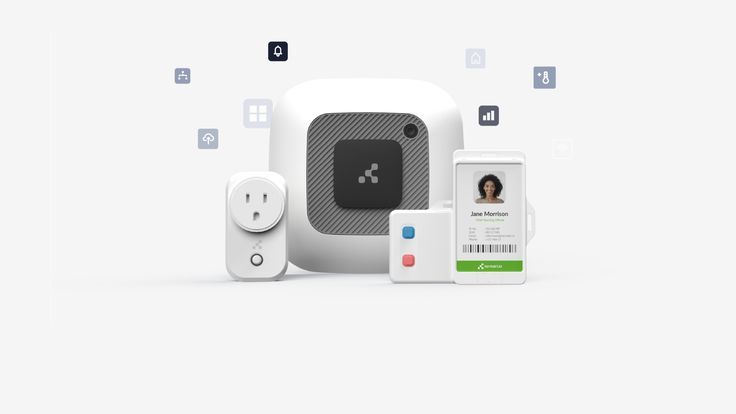
Beacon technology has revolutionized various industries, ranging from retail and healthcare to hospitality. These small wonders have the potential to enhance virtually any smartphone app.
Mobile app beacons made their debut in 2013, and since then, significant technical advancements have taken place in this field. Let’s delve into how beacons currently integrate with mobile applications. Imagine you are a retail app developer.
Businesses can install beacons in their stores, which communicate with a user’s smartphone via Bluetooth if they have the app installed. When a person passes by a beacon, they instantly receive information about special offers and deals available in that store.
Beacons are also highly effective in monitoring customer activity within establishments. They can detect when a shopper is spending quality time in a particular aisle and send them a push notification to entice them with future deals on those products.
In this context, proximity marketing emerges as the real MVP, significantly enhancing the user experience in mobile applications.
Furthermore, the beacon technology industry is experiencing explosive growth. According to Statista, it is projected to grow at a compound annual growth rate of 59.8%. The expected market value is anticipated to reach $56.6 billion by 2026, which is more than ten times the $519.6 million in 2016. It’s the dawn of a revolution.
Cloud-Based Apps
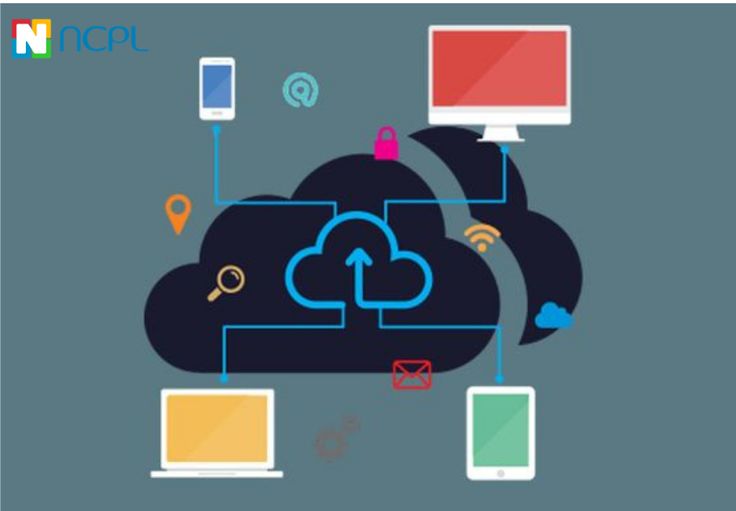
These days, mobile applications are brimming with cutting-edge technology such as AI, Machine Learning, and the Internet of Things. However, let’s face the reality: people don’t want hefty programs hogging all of their device’s capacity.
But here’s the good news! Cloud computing comes to the rescue. It allows apps to store data on remote servers instead of depleting your phone’s limited storage space. What’s even more exciting? These cloud-based mobile apps are set to take the spotlight in 2024. They’re stealing the show in the realm of app development.
What’s the buzz all about? Well, they enable secure device operations, boost computational power, enhance storage, and streamline loading times. This is precisely why developers are flocking to create cloud-based apps. It’s the era of cloud mobile computing, where the cloud’s capabilities deliver superior and more efficient mobile experiences.
Privacy And Mobile App Security

In today’s environment, mobile devices face significant security concerns and are vulnerable to various threats. According to Statista’s 2022 study, there were over 5.5 billion malware attacks worldwide in 2022, with a projected 2% increase in 2024. Furthermore, approximately 45% of iOS and Android users indicated they would discontinue using an app and discourage others from using it if they deemed it unsafe.
Organizations are increasingly prioritizing cybersecurity as they depend more on mobile apps. Their goal is to create apps with robust data protection and compliance with stringent data privacy regulations. Since user confidence is at stake, rigorous testing throughout the app development process becomes crucial for identifying and rectifying issues.
As a result, the focus on enhancing mobile app security emerges as a prominent trend. Developers are eager to implement features like “Sign in With Apple” and biometric logins, such as fingerprint or face scans, to provide an additional layer of protection. Prioritizing app security in 2024 is crucial for establishing trust and ensuring long-term success.
It guides us toward a security-first approach and lays the foundation for a robust DevOps strategy. In this context, the inclusion of location-based experiences using beacon technology is poised to be one of the most exciting developments in mobile app development, leading to a more personalized user experience.
Gamification Of Apps
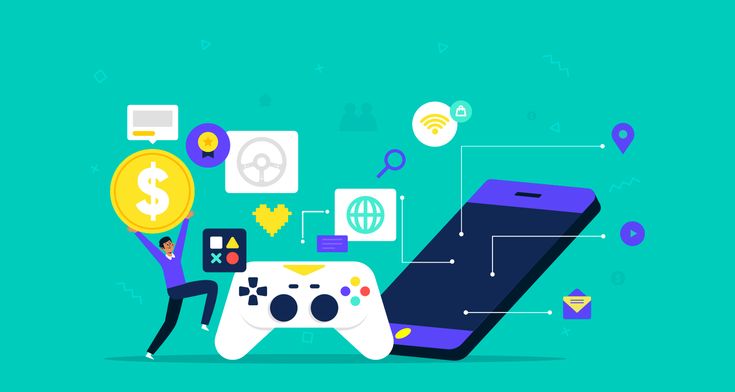
The world of apps has undergone a significant transformation in recent years, offering a variety of experiences. It’s no longer solely about productivity or practicality; there is now an abundance of applications catering to a wide range of interests and needs. For instance, among the many options available, some apps provide cosmetic tutorials and hairstyling tips alongside fun and addictive games.
Businesses refer to this blend of enjoyment and utility in apps as “gamification.” It’s a strategy in which companies incorporate gaming elements into their apps to engage their audience in a more interactive manner. Businesses create a new avenue for communication with their target audience by allowing consumers to play enjoyable games on their mobile devices.
The appeal of gamification lies in its ability to reward users. Providing incentives, achievements, or bonuses adds an extra layer of excitement and motivation for customers to continue using the app. This, in turn, fosters loyalty and a desire to return for more, enhancing the overall user experience.
Mobile app development has become a driving force behind these changes, introducing new and innovative ways for users to engage with brands and organizations continually. This shift has prompted many companies to reevaluate their existing apps and explore new ideas that may resonate with a broader audience.
The inherent appeal of gaming underlies the belief that this trend will continue to grow. After all, who wouldn’t want to enjoy entertaining games within apps? The combination of entertainment, rewards, and brand engagement offered by gamification is an enticing proposition for both businesses and consumers, paving the way for an even more dynamic and enjoyable app experience in the future.
Responsive Web Design (RWD)

The speed at which a website loads and its usability are crucial factors. People desire a seamless experience whether they are browsing your site on a laptop, tablet, or mobile phone. This means avoiding annoying pop-ups that hinder access to the content they seek. Responsive web design provides a solution to this need.
This approach allows websites to adapt and display optimally across a wide range of devices and screen sizes. It’s akin to having a website that adjusts to the user’s device, making navigation straightforward and effortless. Businesses can ensure a consistent and effective user experience by implementing responsive design, which is vital for retaining and attracting visitors.
The advantage of responsive web design is that it doesn’t entail additional costs. Once adopted, it offers an inclusive, user-friendly platform, eliminating the necessity to build separate websites or applications for different devices. It streamlines the user experience, making online transactions and interactions more accessible and efficient for both businesses and customers.
In the end, it’s a win-win situation. Users benefit from improved online experiences, while companies enjoy increased user engagement and the potential for more conversions—all without making additional financial commitments.
Rise Of 5G Technology

The imminent introduction of 5G in 2024 is set to reshape the app ecosystem. This technology promises a significant transformation in both the use and production of mobile apps for developers, resellers, and artists.
The number of 5G connections in 2021 was approximately 3.5 times higher than in 2020. This figure is expected to almost quadruple between 2022 and 2024.
So, how will this impact mobile app development?
Be prepared for a substantial increase in speed and efficiency. 5G is anticipated to reduce latency by a factor of ten while enhancing network efficiency and traffic capacity. The implications are substantial, with speeds potentially reaching up to 100 times faster than 4G, depending on the mobile network operator.
The utility of mobile apps is poised to soar as 5G penetrates deeper. This means that developers can introduce new features without compromising an app’s speed.
Additionally, developers and mobile app resellers must leverage 5G speeds during the app testing and development phases.
With 5G set to launch in 2024, app trends are on the cusp of a radical transformation that will profoundly affect developers, resellers, and creators. The functionality of mobile apps is projected to skyrocket, thanks to the remarkable surge in 5G connections between 2022 and 2024, along with the ensuing improvements in speed and efficiency.
Given this progress, new features can be seamlessly integrated into apps without impacting their performance. Developers and resellers should harness the speed and capabilities of 5G in app testing and development to fully harness the benefits of this impending shift.
Mobile Wallet And Contactless Payments

The field of mobile app development is in a constant state of change, and one notable trend is the growing emphasis on mobile payments in the world of e-commerce.
Globally, the e-commerce market is expanding, and an increasing number of customers are turning to their mobile phones for shopping. This surge in popularity has created a growing demand for practical and secure mobile payment options. It is expected that by 2024, 1.31 billion customers worldwide will be using mobile payments.
In addition to traditional banking applications, popular payment apps such as Apple Pay, Google Pay, PayPal, AliPay, WeChatPay, and Zelle have gained significant traction. These apps enable users to carry out financial transactions quickly and securely from anywhere, contributing to the rapid growth of mobile commerce. QR codes, in particular, have become increasingly popular for contactless payments, with numerous payment applications and platforms incorporating them to streamline transactions.
Looking ahead, we foresee that the development of e-commerce applications with integrated mobile payment features will remain a prominent trend in mobile app development. Businesses and app developers recognize the importance of delivering seamless and secure mobile payment experiences to cater to the growing number of customers who prefer to make purchases and transactions on their mobile devices.
By embracing this trend and incorporating mobile payment features into their e-commerce applications, businesses can enhance customer convenience, expand their user base, and stay competitive in the ever-evolving mobile app market.
Blockchain Technology

Blockchain technology is making waves in various domains, with mobile app development being no exception. It operates on a highly secure and decentralized network, ensuring that transactions and data storage are exceptionally transparent and nearly impervious to tampering. Mobile apps are increasingly adopting blockchain to enhance security, streamline processes, and instill confidence and transparency among users.
These blockchain-based apps offer significant advantages, including immutability (once data is there, it remains there indefinitely), traceability, and data integrity. They are gaining prominence in industries as diverse as supply chain management, banking, healthcare, and even voting systems. By embracing blockchain technology, these applications are revolutionizing the landscape by eliminating intermediaries, reducing fraud, and improving overall efficiency and speed.
The incorporation of blockchain technology into mobile app development is not just a passing trend; it is paving the way for a future in which our digital environment is substantially more secure and less dominated by a select few influential individuals.
Low code Or No code

The low-code movement is causing quite a stir in the mobile app industry. It essentially grants anyone, including non-programmers, the ability to create mobile apps using user-friendly visual interfaces and pre-made components. It’s akin to providing developers with a shortcut to craft exceptional, interactive apps in a fraction of the time.
Take, for instance, Zapier. It enables you to seamlessly plug and play with various services and functionalities, making app development a breeze.
Then there’s Bubble, a website that’s a lifesaver for non-technical designers and business owners who aspire to create fully-fledged online apps. Can you believe that the global low-code platform industry is projected to reach $65 billion by 2027?
These platforms offer drag-and-drop functionality, pre-made templates, and tools that are so user-friendly that you don’t need to be a computer whiz. This mobile app development trend is all about expediting the process, reducing costs, and fostering creativity. It’s all about enabling non-technical individuals like you to turn their app concepts into reality. It’s akin to democratizing app creation, and it’s opening up new opportunities for both individuals and businesses.
- Predictive Analytics

Predictive analytics, which leverages technologies like machine learning, AI, data mining, and modeling, enables the prediction of events using data.
Let’s take Netflix as an example: it recommends shows based on a user’s previous viewing habits, illustrating the practical application of predictive analytics in mobile applications. Looking forward to 2024, predictive analytics is on the cusp of becoming a dominant force in enhancing consumer experiences. The objective is to ensure that no two app users share identical experiences.
Customizing product suggestions and services according to each user’s behavioral history is the future direction. This involves tailoring the app experience to the individual user’s specific preferences. Furthermore, by integrating predictive analytics with mobile app development, we anticipate a significant transformation in how applications engage with consumers on a more personalized level.
Conclusion
Finally, the mobile app industry is an ever-evolving landscape. The year 2024 is expected to usher in new trends while further advancing existing ones, compelling developers and businesses to stay up-to-date to remain competitive. Key focal points for this year will include AI, AR, cross-platform development, bolstered security measures, PWAs, and declarative programming. Embracing these trends is imperative for crafting innovative, user-centered, and financially successful mobile applications within the dynamic digital environment.
FAQs
How can developers incorporate Artificial Intelligence (AI) into the creation of mobile apps?
Developers can integrate Artificial Intelligence (AI) into mobile app development by implementing AI-powered chatbots. These chatbots enhance user engagement and communication, offering a personalized user experience. Furthermore, the utilization of Machine Learning algorithms allows for the analysis of user data, enabling the delivery of tailored information and recommendations.
What impact will 5G technology have on mobile app development trends?
The advent of 5G technology will empower mobile app developers to create apps with faster loading times, improved connectivity, and enhanced user experiences. This technology provides swifter data transfer and reduced latency, paving the way for more sophisticated features and functionalities in mobile apps.
Are there any new design trends expected in mobile app development?
Certainly, there are several emerging design trends for 2024. These include more immersive experiences through augmented reality (AR) and virtual reality (VR) integration. Additionally, minimalist yet user-friendly interfaces, dark mode options, and the integration of inclusive design principles are gaining popularity.
What influence will these developments have on the future of mobile app development?
These developments will significantly impact the future of mobile app development by enhancing user experiences, expanding app functionalities, and fostering the creation of innovative apps across various industries. Those who embrace these trends are more likely to develop successful and competitive mobile apps.

